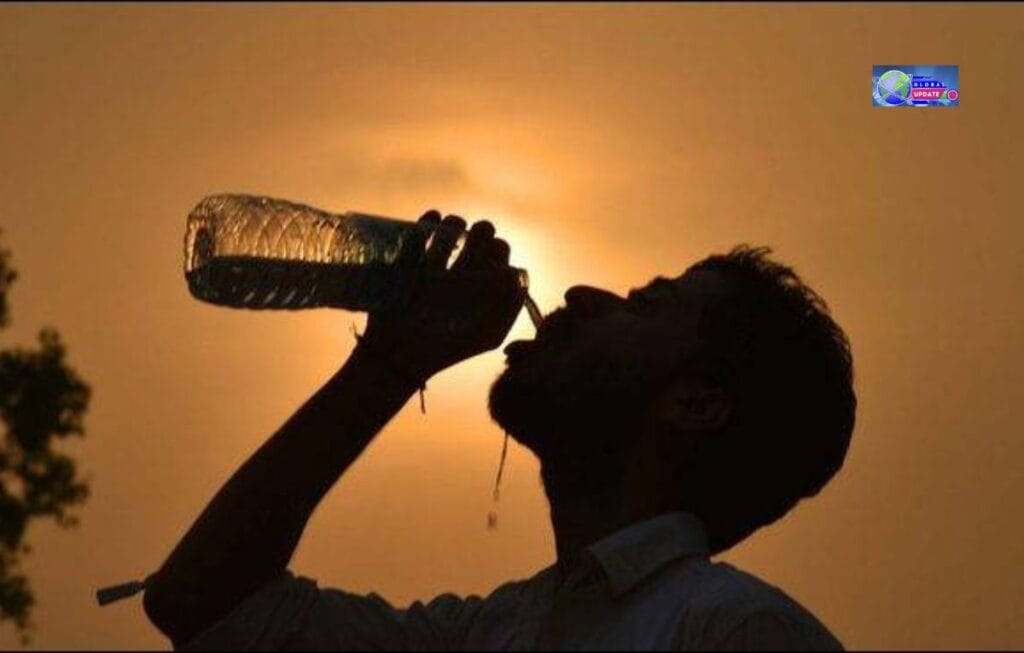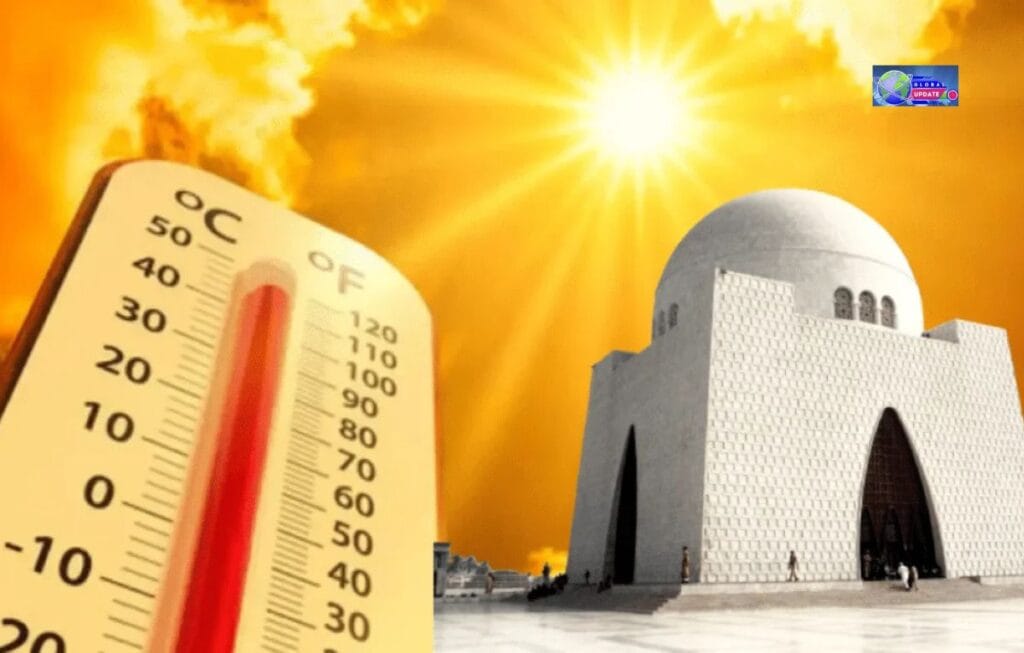Karachi hot weather & sizzles under scorching heat in June, with temperatures soaring above 40°C and humidity intensifying the discomfort.
Karachi is the largest and most populous city in Pakistan, and as such, it experiences extremely high temperatures during the summer. This coastal city is situated right next to the Arabian Sea, resulting in a unique weather pattern that combines hot and dry conditions, particularly in May and June.
Due to its location, the winters aren’t too severe. Still, the summers can be unbearable, with temperatures rising to dangerous levels and putting the city’s nearly 20 million residents to the test.
Karachi’s weather is affected by its location.
Karachi is in the southern part of Pakistan, in the province of Sindh. Its location on the coast has a significant effect on its temperature.
Some relief can be found in the sea breezes, especially at night. However, the high population density, urban sprawl, and concrete infrastructure often trap heat, making the “urban heat island” effect stronger.
A Köppen climate classification of BWh means that Karachi has a “hot desert climate.” This means the summers will be long, hot, with little rainfall, and the winters will be short and mild.
There isn’t usually a smooth change from spring to fall in the city. Summer, on the other hand, usually starts in April and lasts until October.
Temperatures in Karachi in the summer.
Most of the time, Karachi experiences temperatures between 35°C and 42°C (95°F and 107°F) during the summer, particularly in June and July.
However, it’s not just the heat that’s difficult; it’s also the humidity. The “feels like” temperature, also known as the heat index, can become significantly higher when the humidity level exceeds 70%.
Heatstroke is one of the most severe conditions that can occur in this extreme heat. When the body cannot control its temperature due to being too hot or too cold, it can lead to life-threatening situations.
Karachi hospitals are prepared to treat a large number of people who are dehydrated, sunburned, and exhausted due to the heat, particularly during heat waves.
Heatwaves in the past.
Karachi has been experiencing severe heat waves in recent years. The heatwave in June 2015 is still the deadliest in the city’s history. Over 1,200 people died because of the heat as temperatures rose to 45°C (113°F).
There wasn’t enough room in hospitals or morgues, and fans and air conditioners stopped working because of a lack of electricity.
This terrible event should have been a wake-up call for both the government and the people. It highlighted the importance of being prepared for heat waves, making cities greener, and facilitating easier access to public cooling centres for people.
Loss of power and the heat crisis.
Frequent power outages are one of the worst aspects of Karachi’s scorching hot weather. It’s even worse in the summer for load cutting, which occurs frequently in the city.
People often lack access to fans, water pumps, or air conditioning when the temperature exceeds 40°C and there is little to no wind.
People become angrier and their health risks worsen as a result.
Also, the city’s water supply depends heavily on electric pumping stations.
Water shortages caused by prolonged power outages often force people to use expensive tankers or reduce their water usage overall.
Hot Weather: How Karachi residents cope with the heat.
Even though things are tough, the people of Karachi have come up with ways to beat the heat:
Water is essential: many people carry water bottles with them or purchase drinks like lassi, lemonade, and sugarcane juice on the street to stay hydrated.
Traditional Remedies: People like to drink sattu and imli-aloo bukhara sherbet because they cool them down.
Many people don’t go outside in the afternoon (12 to 4 pm), which is the hottest part of the day. They carry umbrellas, wear caps, and put on sunglasses when needed.
Cooling Centers: During heatwaves in recent years, NGOs and community groups have set up makeshift cooling centers that offer cover, water, and basic medical care.
Social media messages: People can receive weather forecasts and updates on Twitter, WhatsApp, and other platforms to help them prepare ahead of time.
Karachi is experiencing warmer temperatures as a result of climate change.
The summers are becoming increasingly severe due to global climate change. Climate scientists say that Karachi’s average temperature has increased by more than 1.5°C over the last 30 years.
This may not seem like a significant issue, but in the context of cities, it is.
Heatwaves that last longer and occur more frequently are being recorded, along with extreme weather patterns and unpredictable rainfall.
Rising sea levels pose another danger to Karachi, as it is located on the coast. The heat can worsen due to saltwater intrusion and environmental changes.
Deforestation and unchecked urbanization have also cut down on green areas, which makes it harder for the city to cool down naturally.
Ways to Move Forward and Solutions.
Urban Greening Initiatives: Creating green spaces and planting trees in densely populated areas can significantly reduce the urban heat island effect.
Not only do trees provide shade, but they also cool the air by losing water through their leaves.
Infrastructure that doesn’t collect heat: Materials that reflect heat can be used to build or fix up roads and buildings. Rooftop gardening and painting roofs white are creative and inexpensive ways to cool down inside.
Campaigns to raise awareness: Teaching people the signs of heatstroke, the importance of staying hydrated, and where to seek help can save lives in an emergency.
Policy from the government: The city government needs to enforce building codes, improve water and electricity systems, and back planning for cities that can withstand climate change.
Early Warning Systems: Advanced weather tracking and early warning systems can help people and emergency services prepare for heatwaves before they occur.

Weather for Karāchi, Pakistan:
Current Conditions: Partly sunny, 93°F (38°C)
Daily Forecast:
- Tuesday, June 17: Low: 85°F (30°C), High: 103°F (40°C), Description: Very hot with some sun, then turning cloudy; breezy this afternoon; danger of dehydration and heatstroke if outside for extended periods
- Wednesday, June 18: Low: 85°F (30°C), High: 97°F (36°C), Description: Partly sunny, breezy and very warm
- Thursday, June 19: Low: 85°F (30°C), High: 95°F (36°C), Description: Windy and very warm with times of clouds and sun
- Friday, June 20: Low: 84°F (30°C), High: 95°F (35°C), Description: A thunderstorm around in the morning; otherwise, mostly cloudy and breezy
- Saturday, June 21: Low: 86°F (29°C), High: 97°F (36°C), Description: Clouds and sunshine, breezy and very warm
- Sunday, June 22: Low: 85°F (29°C), High: 95°F (34°C), Description: Clouds and sun with a couple of showers around, mainly late; breezy
- Monday, June 23: Low: 83°F (29°C), High: 98°F (36°C), Description: Cloudy and very warm with a stray shower.
- Tuesday, June 24: Low: 82°F (29°C), High: 95°F (36°C), Description: Cloudy and very warm with a stray shower
Here’s a breakdown of Karachi’s weather for June 17–23, 2025:
Weather Overview
Temp & Humidity
- Daytime highs will range from 94–103 °F (34–41 °C).
- Nighttime lows typically range from 83 to 84°F (28 to 29°C).
- These temperatures reflect a typical early summer pattern, characterised by extremely hot conditions, especially in the afternoons.
Winds & Comfort
- Sea breezes play a role almost daily, making outdoor conditions slightly more bearable.
- Expect breezy conditions, particularly from June 17 to 19, which help mitigate some heat but also increase dust and haze.
Rain & Thunderstorms
- A morning thunderstorm is forecasted for June 20, followed by showers on June 22.
- These brief rains will offer relief from the heat but will be accompanied by high humidity afterwards, making it feel stickier and more uncomfortable.
Health & Safety Tips
- Stay Hydrated: Drink plenty of water throughout the day, especially before heading out in the morning.
- Avoid Peak Sun Hours: Limit outdoor activity between 11:00 am and 3:30 pm, when temperatures are highest and UV exposure is most significant.
- Use Shade & Cooling Methods: Hats, umbrellas, and light, breathable clothing are essential.
- Monitor Health: Be alert for signs of heat exhaustion (headache, dizziness, cramps); admins: seek shade and fluids immediately.
In short
The hot weather is expected to be very intense over the next few days, but ocean breezes will provide some relief. Showers will help cool things down for a short time during the week, but they will increase humidity in the evening.
In general, getting water early, finding shade, and making minor changes to your schedule can make summer much more comfortable.
Based on this forecast, would you like help planning your daily routines, work, or ways to stay cool?
Last Thoughts
Karachi’s hot weather isn’t just a yearly annoyance; it poses a serious threat to public health, a significant economic problem, and a sign of the changing global climate.
The heat may be unavoidable, but its effects can be mitigated with the right combination of community efforts, technological assistance, and government commitment.
Karachi’s people are strong, but as temperatures rise, that strength needs to be backed up by new ideas and long-term solutions.
Let people remember Karachi’s summers not as a time of pain, but as a time when the city was able to adapt, survive, and ultimately thrive in the sun.



